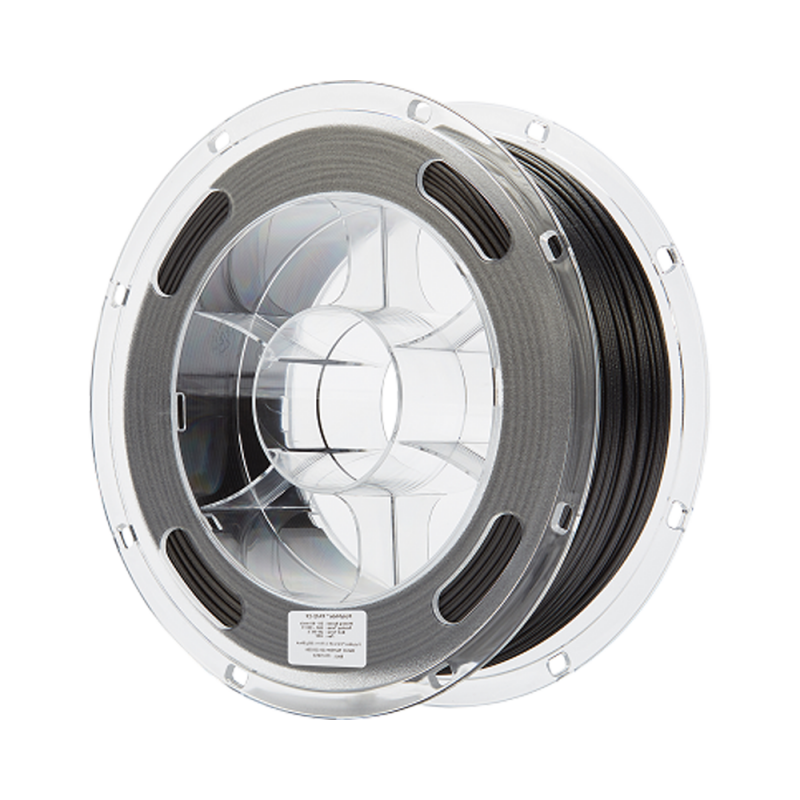54,99 € VAT exc.
PolyMide™ is a family of Nylon/polyamide based filaments. Produced with Polymaker’s Warp-Free™ technology, PolyMide™ filaments deliver engineering properties intrinsic to Nylon and ease of printing.
PolyMide™ PA6-CF is a carbon fiber reinforced PA6 (Nylon 6) filament. The carbon fiber reinforcement provides significantly improved stiffness, strength and heat resistance with outstanding layer adhesion.
| Recommended settings | Mechanical properties | Thermal properties | Notes |
| Nozzle Temperature: 280˚C – 300˚C |
Young’s Modulus: 7453 ± 656 (MPa) |
Heat Deflection Temperature (ISO 75 1.8 MPa): 196 ˚C |
Drying Settings: 80˚C for 12h |
| Printing Speed: 60mm/s |
Tensile Strength: 105.0 ± 5.0 (MPa) |
Heat Deflection Temperature (ISO 75 0.45 MPa): 215 ˚C |
Recommended Support Materials: BVOH |
| Bed Temperature: 25˚C – 50˚C (Do NOT exceed 50 ˚C) |
Bending Strength: 169.0 ± 4.7 (MPa) |
Melting Temperature: 220 (°C) |
Other: Annealing 80℃ 6h |
| Bed Surface: almost any surface with a thin coat of 3DLac |
Charpy Impact Strength: 13.34 ± 0.52 (kJ/m2) |
||
| Cooling Fan: OFF |
We highly recommend to use a wear resistant nozzle
PolyMide™ PA6 CF features Polymaker's Warp-Free™ technology and Fiber Adhesion™ technology:
Warp-Free™ technology enables the production of Nylon-based filaments that can be 3D printed with excellent dimensional stability and near-zero warpage. This is achieved by the fine control of microstructure and crystallization behavior of Nylon, which enables the material to fully release the internal stress before solidification.

